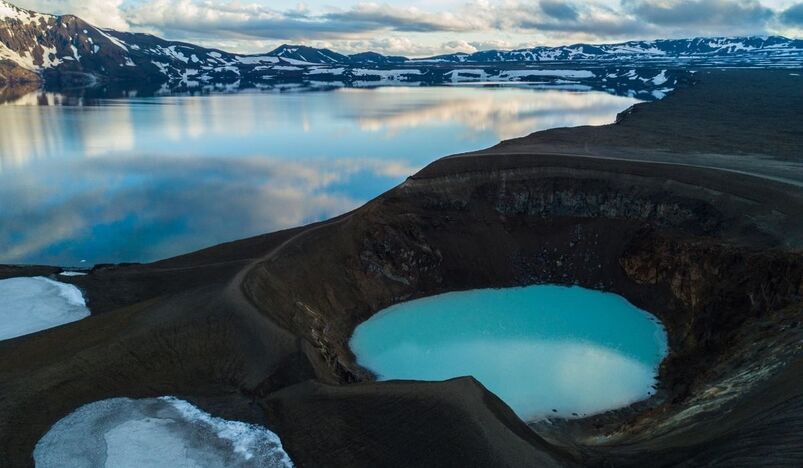
Iceland may be the tip of a sunken continent
'Icelandia' was lost to the sea 10 million years ago.
Iceland may be the last exposed remnant of a nearly Texas-size continent — called Icelandia — that sank beneath the North Atlantic Ocean about 10 million years ago, according to a new theory proposed by an international team of geophysicists and geologists.
The theory goes against long-standing ideas about the formation of Iceland and the North Atlantic, but the researchers say the theory explains both the geological features of the ocean floor and why Earth's crust beneath Iceland is so much thicker than it should be. Outside experts not affiliated with the research told Live Science they are skeptical that Icelandia exists based on the evidence collected so far.
Even so, if geological studies prove the theory, the radical new idea of a sunken continent could have implications for the ownership of any fuels found beneath the seafloor, which under international law belong to a country that can show their continental crust extends that far.
"The region that's got continental material underneath, it stretched from Greenland to Scandinavia," said Gillian Foulger, lead author of "Icelandia," a chapter in the new book "In the Footsteps of Warren B. Hamilton: New Ideas in Earth Science" (Geological Society of America, 2021) that describes the new theory. "Some of it in the west and east has now sunk below the surface of the water, but it's still standing higher than it should. … If the sea level dropped 600 meters [2,000 feet], then we would see a lot more land above the surface of the ocean," Foulger, an emeritus professor of geophysics at Durham University in the United Kingdom, told Live Science.
Lost continent
The North Atlantic region was once entirely dry land that made up the supercontinent of Pangaea from about 335 million to 175 million years ago, Foulger said. Geologists have long thought that the basin of the North Atlantic Ocean formed as Pangaea began to break up 200 million years ago and that Iceland formed about 60 million years ago above a volcanic plume near the center of the ocean.
But Foulger and her co-authors suggest a different theory: that oceans began to form roughly south and north — but not west and east — of Iceland as Pangaea broke up. Instead, the geologists wrote, the areas to the west and east remained connected to what are now Greenland and Scandinavia.
"People have this highly simplistic idea that a tectonic plate is kind of like a dinner plate: It just splits in two and moves apart," Foulger said. "But it's more like a pizza, or a piece of artwork made from different materials — some fabric here and some ceramic there, so that different parts have different strengths.
.jpg)
Qatar Secures Place Among the World's Top 10 Wealthiest Nations
.jpg)
Hamad International Airport Witnesses Record Increase in Passenger Traffic

Saudi Arabia: Any visa holder can now perform Umrah

What are Qatar's Labour Laws on Annual Leave?
Leave a comment